Adrian Collins's Blog, page 31
January 23, 2025
Glass Technology Advances in Dark Science Fiction (Project Starship #2)
Glass is a paradox: an ancient material at the forefront of modern technology, a state of matter occupying a liminal space between liquids and solids. As an artistic medium, the beauty of glass has captured the imagination of humankind for thousands of years. As an engineering material, glass in the form of fiber optics and smartphone screens has played a transformational role in bringing humanity to the Information Age [1].
 What does the future hold for glass technology? We often look to science fiction for clues about how today’s science can be extrapolated to future advances. To this end, Project Starship is Grimdark Magazine’s science-meets-science fiction initiative to deepen the connection between the scientific and literary communities. The goal is to stimulate dialogue across these two often disparate fields, with a focus on engineering challenges posed by the starships from some of our favorite dark science fiction universes.
What does the future hold for glass technology? We often look to science fiction for clues about how today’s science can be extrapolated to future advances. To this end, Project Starship is Grimdark Magazine’s science-meets-science fiction initiative to deepen the connection between the scientific and literary communities. The goal is to stimulate dialogue across these two often disparate fields, with a focus on engineering challenges posed by the starships from some of our favorite dark science fiction universes.
Starships are a ubiquitous presence in science fiction and an archetypal example of conceptual technology that can inspire the next generation of scientists and engineers. As a professor of materials science and engineering at The Pennsylvania State University, I am especially interested in the role of various materials—ceramics, glasses, metals, polymers, etc.—in building the starships of tomorrow. In our inaugural Project Starship article, published in the previous issue of Grimdark Magazine, we interviewed three authors of dark science fiction—Essa Hansen, Richard Swan, and Graham McNeill—to understand the design requirements for the starships within their fictional universes [2]. In this second installment in our Project Starship series, we turn our attention to glass, a material long known to humanity but which still harbors many mysteries.
Phase Change Materials: Is Glass a Liquid or a Solid?Glass is an overlooked and often misunderstood material, something that we usually look through rather than look at. One of the highlights of reading Essa Hansen’s dark science fiction novel, Nophek Gloss, is the Glasliq starship, which can flip phases between a flowing liquid or rigid solid, and even transform into a cloud of particulates. The Glasliq’s phase changes are designed to accommodate extreme fluctuations in its environment, allowing the starship to avoid obstacles or pass through openings of different sizes and shapes without losing the structural integrity of the starship itself.
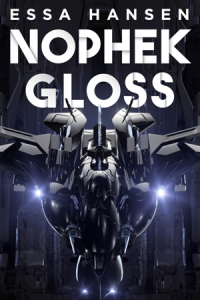 The phase-changing Glasliq starship raises a fundamental question: is glass a solid or a liquid? The reality is that glass does not fit neatly into either of these categories. Glass is more accurately described as a non-binary material possessing combined properties of both liquids and solids, as well as having its own features that are unique to the glassy state [3].
The phase-changing Glasliq starship raises a fundamental question: is glass a solid or a liquid? The reality is that glass does not fit neatly into either of these categories. Glass is more accurately described as a non-binary material possessing combined properties of both liquids and solids, as well as having its own features that are unique to the glassy state [3].
Although most of our commonly known glasses are silicate-based, having quartz sand as their primary ingredient, glass can be made from any liquid of any chemical composition, provided that the liquid is cooled fast enough to avoid crystallization. This rapid quenching process is what produces a glass, i.e., a material having a disordered, non-crystalline atomic structure that is frozen-in from the liquid state. Glasses also possess a viscosity, a property that is characteristic of the liquid state [4]. However, the viscosity of glass is so high that it effectively acts like a solid material, flowing too slowly to observe on normal human time scales.
We all know that if you drop a glass object on pavement, it will break as a brittle solid rather than flow like a liquid. This brings up the importance of time scale in governing the mechanical response of a glass. When a piece of glass is dropped onto pavement, the impact occurs in a fraction of a second, not giving the atoms in the glass enough time to flow out of the way. As a result, the atomic bonds in the glass are broken, causing the glass to shatter upon impact. On the other hand, if stress is applied to a glass over a much longer time scale, it would respond to that stress by flowing as a viscous liquid. This dependence of glass properties on time scale is an intrinsic feature of the glassy state: that is, the response of a glass to any external stimulus is dependent on the time scale of the perturbation. Glass behaves like a solid if probed on a short time scale but like a liquid on a much longer time scale.
Returning to the Glasliq starship from Nophek Gloss, the ability of a glass to change phases depends on temperature, but also on time scale. As a starship approaches the speed of light, warping of time due to relativistic effects will have a direct influence on whether the glassy material behaves more like a solid or a liquid [5].
Although Essa Hansen’s concept of phase change glasses has not yet been implemented in aircraft design, such materials are already used in optical memory and energy storage [6]. For example, in rewritable optical memory devices, lasers are used to heat a local region of a material to the liquid state. If the laser is turned off quickly, the rapid cooling doesn’t allow enough time for the liquid to crystallize, and the disordered liquid structure freezes into the glassy state. On the other hand, if the laser is turned off more slowly, the slower cooling gives the atoms in the liquid enough time to rearrange into a lower-energy crystalline configuration. Since the glass and crystal have different values of refractive index (different abilities to bend incoming light), one phase can be designated as a “one” bit and the other phase as a “zero” bit, enabling high-density three-dimensional optical memory storage. The higher potential energy of the glass relative to the crystal can also be leveraged for energy storage applications.
Making Glass StrongerIn our previous Project Starship article [2], each of the authors emphasized the need for high-strength armored spacecraft. For example, high-strength glass is required to protect the viewports on the military starships in Graham McNeill and Richard Swan’s universes, surviving projectiles and space debris.
 As a brittle material, the practical strength of glass can vary by orders of magnitude: a freshly drawn glass fiber is stronger than steel, but glass can easily break when flaws are introduced to its surfaces [1]. The most effective way to protect against these flaws and improve the strength of glass products is to create a layer of compressive stress in the surfaces of the glass. Any outside enemy attack must provide enough force to overcome this compressive stress layer before the glass itself can be broken.
As a brittle material, the practical strength of glass can vary by orders of magnitude: a freshly drawn glass fiber is stronger than steel, but glass can easily break when flaws are introduced to its surfaces [1]. The most effective way to protect against these flaws and improve the strength of glass products is to create a layer of compressive stress in the surfaces of the glass. Any outside enemy attack must provide enough force to overcome this compressive stress layer before the glass itself can be broken.
The greatest amount of compressive stress can be generated through a chemical strengthening process known as ion exchange. During the ion exchange process, an initial glass is formed containing some concentration of small alkali ions, typically lithium or sodium. The as-made glass is then submerged in a molten salt bath containing larger alkali ions, typically potassium. During the salt bath treatment, smaller alkali ions from the glass diffuse into the salt bath and are replaced by larger cations from the salt. By “stuffing” these larger alkalis into sites previously occupied by smaller ions, a protective compressive stress layer develops near the surface of the glass. The compressive stress layer acts to inhibit the formation and propagation of cracks in the glass surface. Ion exchange is now the preferred method for strengthening the glass used in personal electronic devices such as smartphones, tablets, and touch-screen laptops. Ion exchange is also used to chemically strengthen aircraft windshields [1], so it seems natural that this process could be adopted for glass used in the starships of the future.
Two other methods to install compressive stress in a glass are lamination and thermal tempering, both of which create stress based on differences in the thermal contraction of a glass upon cooling. With thermal tempering, a glass is cooled rapidly from high temperature; the outer surfaces of the glass cool faster than the interior, becoming rigid while the inner part is still molten. The interior of the glass wants to shrink more than the outer surfaces. As a result, the inner part of the glass pulls the outer surfaces into compression. This same principle can be applied to laminates, which consist of multiple layers of material, where the outer cladding has a lower thermal expansion coefficient and thus exhibits less contraction upon cooling compared to the middle layer, causing the surfaces to be pulled into compression [1]. The most famous example of thermally tempered glass is the Prince Rupert’s Drop, which exhibits incredibly high strength unless the tail is clipped, which releases all the tensile energy from the drop, causing it to shatter in catastrophic fashion.
Through a Glass, DarklyAnother key property of glass is its optical transparency, offering visibility to the outside world while providing a thermal and mechanical barrier to the harsh surroundings. Optical transparency is the single most important property for certain applications of glass, such as lenses and optical fiber. Next-generation optical fibers may be clear enough to enable routine use of quantum communication, allowing secure data transmission using entangled photons.
 However, optical transparency is not a ubiquitous feature of all glassy materials. For example, chalcogenide glasses—made from sulfur, selenium, or tellurium—absorb visible light but allow transparency in the infrared. Although they appear dark to our eyes, chalcogenide glasses enable night vision applications, as well as thermal imaging for starship navigation and enemy targeting.
However, optical transparency is not a ubiquitous feature of all glassy materials. For example, chalcogenide glasses—made from sulfur, selenium, or tellurium—absorb visible light but allow transparency in the infrared. Although they appear dark to our eyes, chalcogenide glasses enable night vision applications, as well as thermal imaging for starship navigation and enemy targeting.
A more recently discovered family of glasses—bulk metallic glass alloys—are opaque across both the visible and infrared parts of the spectrum. Metallic glasses are alloys that combine different types of metals having mutually incompatible crystal structures. As a result, they are more stable against crystallization compared to normal metals, and therefore can be more easily quenched into the disordered glassy state. Although they are not optically transparent, metallic glasses offer exceptional mechanical performance, including a shockingly high coefficient of restitution, meaning that they dissipate very little energy upon impact. Metallic glass may prove to be an ideal material for regions of armored starships where transparency is not required.
This article is published in Grimdark Magazine #41. In the next issue of Grimdark Magazine, Dr. Lourdes Bobbio from Penn State University will delve deeper into the challenges and opportunities for metallurgy in starship design.
ReferencesVarshneya, A.K. and Mauro, J.C., 2019. Fundamentals of Inorganic Glasses , 3rd Elsevier, Amsterdam.Mauro, J.C. (2024). Project Starship: Materials Engineering Challenges in Dark Science Fiction. Grimdark Magazine, 40, 64-73.Zanotto, E.D. and Mauro, J.C., 2017. The glassy state of matter: Its definition and ultimate fate. Journal of Non-Crystalline Solids, 471, pp.490-495.Mauro, J.C., Allan, D.C. and Potuzak, M., 2009. Nonequilibrium viscosity of glass. Physical Review B, 80, 094204.Wilkinson, C.J., Doss, K., Palmer, G. and Mauro, J.C., 2019. The relativistic glass transition: A thought experiment. Journal of Non-Crystalline Solids: X, 2, p.100018.Gimenez-Gavarrell, P. and Fereres, S., 2017. Glass encapsulated phase change materials for high temperature thermal energy storage. Renewable Energy, 107, pp.497-507.The post Glass Technology Advances in Dark Science Fiction (Project Starship #2) appeared first on Grimdark Magazine.
January 22, 2025
INTERVIEW: Marjorie Liu
Last Updated on January 23, 2025
Marjorie Liu is a New York Times best-selling author and comic book writer best known for her grimdark fantasy comic series, Monstress, which is set in a darkly beautiful alternate version of Asia circa early 1900s. The war-torn world of Monstress is matriarchal and infused with elements of steampunk and psychic magic. Like the best works of grimdark, Marjorie Liu’s story is rich and dark, balancing external conflict with an equally devastating internal turmoil. Liu won the 2017 Hugo Award for her first Monstress collection, and in 2018 she became the first woman to win the Eisner Award for Best Writer. We recently had the pleasure of interviewing Marjorie Liu regarding her approach to storytelling, her influences, and her projects beyond Monstress.
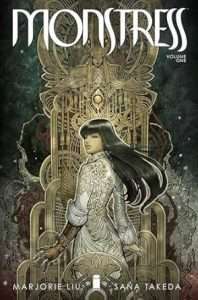 [GdM] Who were some of your early influences as a writer? Were there specific authors, comics, or storytellers who shaped your creative voice?
[GdM] Who were some of your early influences as a writer? Were there specific authors, comics, or storytellers who shaped your creative voice?
[ML] From a young age I was such a voracious reader that now, after all these years, everything has become blended—but there were certainly some very pivotal books and authors—and teachers—who made me rethink language and narrative, and what’s possible as a writer. Before them, I thought I knew what a book could be—after them, I realized I didn’t know anything at all. Those authors were Jorge Luis Borges and Isabelle Allende. My English teacher in high school assigned us Borges’ Labyrinths and Allende’s The Stories of Eva Luna—and it was the first time I felt as though I was reading poetry in prose form. Every sentence meant something, nothing was wasted, each word felt chosen with intention—but more importantly, being immersed in their stories made me think, learn, expand—as if I could grow beyond my own skin. It’s hard to describe, in a way—and it’s not as if Borges and Allende made me decide then and there that I would become a novelist—but I suddenly had the smallest glimpse of a much larger narrative world, and that made me hungry to learn more.
My other important influence was Professor Peter Fritzell, whose course on non-fiction essay writing is probably the reason I’m a writer today. I learned more from him about telling stories than anyone else—and he encouraged and mentored me, and his red pen was brutal—wonderfully so. I loved his criticisms because each one taught me something new and valuable that I needed in order to become a better writer and thinker.
[GdM] Can you share your journey into writing graphic novels? Is the story true about being inspired by seeing a little boy dressed as Spider-Man at a convention?
[ML] I started reading comics when I was around eighteen—after watching the X-Men cartoon on Fox, and then discovering a comic book store near my college. But did I think I was going to write comics? No, not at all. That said, I was a huge Marvel fan, and after I sold my first book I was at a conference, meeting my literary agent for the first time. Her very young son ran up to us dressed as Spider Man—I mentioned to my agent that I loved comics—and she said, “Oh, I know an editor who is looking for writers—her publisher just signed a licensing deal with Marvel to produce prose novels based off their characters.” I got very excited, produced a pitch, and soon after signed on to write an X-Men novel, called Dark Mirror.
It’s the novel that got me my gig writing comics—because I heard through my editor that the folks at Marvel liked the book—and so that gave me the courage to introduce myself to their head of recruitment at New York Comic Con. I told him I was interested in writing comics, he said he’d let the editors know—I stayed in touch— and a couple years later I was hired to write NYX, a comic about mutant teens living homeless on the streets of New York. I didn’t know anything about writing comic book scripts—but I taught myself, and I had a wonderful editor, John Barber, who also mentored me.
Once my foot was in the door, I just kept working—from Dark Wolverine to X-23, Black Widow, the X-Men, and Han Solo—until I moved on to independent work. But what I discovered, right from the start, is that I LOVED writing comics. I loved creating in the medium, and collaborating with artists. I plan to write novels again, but I’ll never give up writing comics. It’s too much fun.
[GdM] Your writing spans multiple genres—fantasy, urban fantasy, horror, and romance. When starting a new project, do you adopt a specific mindset for the genre, or do all stories begin with the same creative place?
[ML] It just starts with a simple idea, or maybe a first line that becomes an idea, or an interesting character who takes up residence in my imagination and stays there until they tell me their story. There’s no rhyme or reason. Each book, each series, is very unique in what inspires it—and sometimes I shift genres as I’m writing. A book that begins as a fantasy might end as science-fiction, or a horror novel might become an urban fantasy. I don’t put hard limits on what I create—I let the characters tell their tales and worry about the genre later.
[GdM] What, in your opinion, sets storytelling in graphic novels and comics apart from other literary forms? How does this medium influence your writing style and the themes you explore?
[ML] Comics and graphic novels—sequential visual storytelling—is that perfect intersection between prose and film. I can play with all the interiority of prose—all the visuals of film—and create a narrative that pulls from the best of both worlds. It’s a very three-dimensional way of working, turning a story over and over in my mind, looking at it from different angles, making choices about what scene, what moment, matters most—because every panel has to do work, has to show some element of character, conflict, world. Unlike prose, there’s not limitless space—I’m working within certain spatial constraints, so I have to choose what matters most to the story, the narrative that will have the most impact in the shortest amount of time. That, of course, has impacted my writing style in a very important way—it’s made me efficient—but also expansive, because I have the privilege of working with wonderful and inspiring artists who bring these stories to life with their own passion and genius, and that encourages me to be even bolder and freer with the stories I feel I can tell.
[GdM] What was the initial inspiration for Monstress? Was there a specific moment that sparked the idea for this story?
[ML] My Chinese grandmother and her stories of surviving World War II were my inspiration. She lived a remarkable, very difficult life—over and over she almost died—and yet, when I knew her, she was a joyous person who had not lost her ability to laugh—at both herself and the world. It taught me an important lesson around resilience—that war can shatter, but one can still heal. And that’s what I brought to Monstress.

Author Marjorie Liu
[GdM] The worldbuilding in Monstress is incredibly intricate. How do you approach this collaboratively with artists such as Sana Takeda? Does the world evolve alongside the story, or do you establish it fully before involving the artist?
[ML] I told Sana that I wanted to tell a story about a girl who survives a war, and who is friends with a Kaiju-sized monster—and then Sana went off and began drawing out some ideas—and I ran off and began jotting down my own ideas—but when Sana showed me her art? Everything changed. I’d been imagining a flesh and blood monster—but Sana created spirits, ghosts, apparitions—a world dark and lovely—and I suddenly realized that this was a story about a haunting, a possession, something even more complex than what I’d been previously imagining. Sana is also the reason the character Kippa exists. Kippa was supposed to be a one-off, someone who would appear in the first issue and then never be seen again—but Sana drew her with such life, so much soul, that as soon as I saw her, I knew Kippa had to be main character in the series.
[GdM] The aesthetic of Monstress—blending Art Nouveau and Art Deco with its fantasy elements—is stunning. How did this visual style develop? Was it part of your vision from the start, or did it emerge through collaboration?
[ML] My early art education brought me to Art Nouveau, but my obsession with art deco began when I lived in Shanghai, where Chinese deco was born. I brought both up to Sana, but she’s the one who made it her own, bringing her sense of otherworldly design and Japanese aesthetics to the art.
[GdM] The graphic novel and comic book industry has long grappled with the fridging of female characters, a practice of harming or killing them to advance a male protagonist’s story. Monstress challenges this norm and presents us with richly layered and powerful female characters. How mindful are you of steering clear of such tropes in your storytelling, and what do you believe the industry needs to do to address this issue more broadly?
[ML] I’ve been mindful of it for as long as I’ve worked in comics— thanks to Gail Simone—and I addressed it directly during my Black Widow run, specifically creating a scene both to confront and subvert the trope of fridging female characters. Is it still a problem? Absolutely. I see it in comics, film, tv, novels—women are killed left and right so that men can be freed of domesticity and have their adventure. As for what the industry needs to do to address this? There’s no easy fix. It’s part of a much larger problem around all the blind spots that people have regarding who matters to a story, whose stories are worth telling, and who deserves to exist in the imaginations of those who consume stories.
[GdM] While Monstress is often described as grimdark, it balances its dark themes with moments of hope and resilience. The protagonist, Maika Halfwolf, operates in morally gray areas, and Monstress is rife with dark themes, brutality, and corruption. How do you navigate this balance to keep the story captivating without becoming overwhelmingly bleak?
[ML] Monstress juggles a lot of ideas—from the darkness of war, racism, colonialism, family trauma, to the struggle to retain one’s humanity (or Arcanicity) in a world that demands far too many compromises—but despite the brutality and moral ambiguity of Monstress, I always write the story from a place of hope, a belief that spiritual wounds can mend, if not outright heal—and that people can change for the better. That is always at the forefront of my mind, which I center in the bonds between the characters—because I also believe that people can’t heal alone. And it’s from the relationships in Monstress that its introspection, humor, and tenderness emerge. But just as important to the balance of the narrative—more so, actually—is Sana Takeda’s brilliant, beautiful art, which is endlessly alive with the world’s pathos, love, compassion, and savagery—art that always invokes the larger mysteries of the world, its ancient truths, forgotten histories—woven into the backgrounds of each panel, or the clothing that characters wear, and the cities they walk through.
[GdM] You transitioned from practicing law to writing full-time. What inspired that shift, and how has your background in law informed your storytelling?
[ML] The transition had little to do with inspiration—I sold my first novel, signed a four-book deal, and had to make a very practical and risky decision. I could work as a lawyer, and only write one book every year or two—or throw fate to the wind, dig deep, and grow my career as a novelist much, much faster. I chose the riskier option, which alarmed my family to no end, but my dream had already come true with selling that first book, and I didn’t want to let go, I was hungry to pursue what might come from that—with no delay. As for my legal background? Studying the law is the study of human nature, it’s the study of facts and how to use those facts to tell the most compelling story. Every day I use the skills I learned in law school.
[GdM] Your first series, Dirk & Steele, was a paranormal romance. How has your writing process evolved since then? Would you describe yourself as a pantser, a plotter, or somewhere in between?
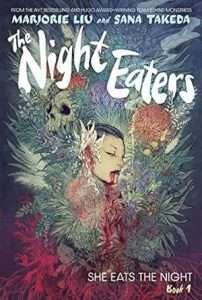 [ML] I used to almost exclusively let stories evolve organically without much of a plan (beyond some major plot points), and just follow the characters where they wanted to go. Which was fun—up to a point—until I’d inevitably write myself into a corner and then spend way too much time back-tracking. It took me a long time to learn new habits, but now I hope I’ve managed a balance between plotting and writing from the gut—though some books just emerge on their own, like forces of nature. She Eats The Night, of The Night Eaters series, was one such graphic novel. It poured out of me, without any planning—as much a surprise as the weather. I sat down, and four days later I had finished writing the book.
[ML] I used to almost exclusively let stories evolve organically without much of a plan (beyond some major plot points), and just follow the characters where they wanted to go. Which was fun—up to a point—until I’d inevitably write myself into a corner and then spend way too much time back-tracking. It took me a long time to learn new habits, but now I hope I’ve managed a balance between plotting and writing from the gut—though some books just emerge on their own, like forces of nature. She Eats The Night, of The Night Eaters series, was one such graphic novel. It poured out of me, without any planning—as much a surprise as the weather. I sat down, and four days later I had finished writing the book.
[GdM] How do you ensure that marginalized voices—such as people of color and queer individuals—are represented authentically in your storytelling?
[ML] I write all my characters with as much genuineness, candor, sincerity, and truth as I can, as much as I bring to my own life, both public and private (and I’m very private). But I’ll say this much: I grew up as a mixed-race girl in the Pacific Northwest, in the 80’s, with a white mother and a Chinese father, spending almost every weekend with my Chinese grandparents at their laundry in Vancouver. I’ve always been surrounded by strong women, always sought out and loved strong women, always been embraced by strong women. And even though my experiences have been specific to me, and me alone, my career has been a twenty-year evolution of me bringing my authentic self and all my experiences to my characters. I don’t know if I always did it well—but I tried.
[GdM] What projects are you currently working on, and what can your fans look forward to in the near future?
[ML] I’m writing the tenth arc of Monstress—with no end in sight— and my other series with Sana Takeda, The Night Eaters, will release its third volume in April 2025, called Their Kingdom Come.
Wingborn, the second in my Wingbearer series for younger readers, came out this last October. Those books are not grimdark by any stretch of the imagination, but they do deal with the aftermath of an ancient war ,and the story is about hope and resilience—and how the strength found in friendships can change the world for the better.
This interview with Marjorie Liu was first published in Grimdark Magazine Issue #41
Read Monstress by Marjorie LiuThe post INTERVIEW: Marjorie Liu appeared first on Grimdark Magazine.
January 21, 2025
REVIEW: Sons of Darkness by Gourav Mohanty
Last Updated on January 22, 2025
Ahead of the release of Gourav Mohanty’s Dance of Shadows, I read the first book in the series, Sons of Darkness (shoutout to Micaela Alcaino for the mesmerizing cover artwork). Mohanty says the series is inspired by an Indian epic poem, the Mahabharata, and reimagines its characters in the bleak, nihilistic realm of Aryavrat.
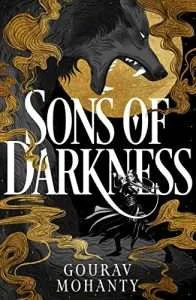 The central plot surrounds a war between the city of Mathura, led by the shepherd-turned-usurper Krishna, and the emperor of Magadh, Jarasandh, who seeks revenge for the deaths of his daughters during the uprising. The book takes place during a one year armistice in the war, which kickstarts a continent’s worth of clever political scheming in the interim. Swirling beneath are prophecies, the return of immortal beings, and the rise of the foretold Son of Darkness.
The central plot surrounds a war between the city of Mathura, led by the shepherd-turned-usurper Krishna, and the emperor of Magadh, Jarasandh, who seeks revenge for the deaths of his daughters during the uprising. The book takes place during a one year armistice in the war, which kickstarts a continent’s worth of clever political scheming in the interim. Swirling beneath are prophecies, the return of immortal beings, and the rise of the foretold Son of Darkness.
There is a big cast and many POVs—you may need to bookmark the Dramatis Personae. Mohanty’s author’s note explicitly thanks George R.R. Martin for writing Game of Thrones, and Sons of Darkness reads very similarly. Royals scheme and manipulate, then we follow their webs to figure out who are the spiders and who are the flies.
I had mixed feelings about the characters; however, the consistently strong characterizations made everyone’s individuality pop from the beginning.
The first section of Sons of Darkness follows Krishna, smugly surviving in Mathura, and Shishupel, a former soldier Jarasandh roped back into politics. I was amused (and unfortunately identified) that even amidst war and diseased bodies catapulting into Mathura, Krishna’s ego was nursing petty bruises about what his brother and wife thought of his plans. Along with the cast in Mathura, his cunning kept me on my toes.
Shishupel fell flat for me. Despite a compelling initial characterization, he didn’t contribute much to the plot or develop as a character, which reduced him to a cameraman. It was fine if he was filming interesting plot points—he saw backroom deals and the epic final battle—but I often wished I could 2x the speed just for plot info.
Later, we follow several other characters, like Shakuni and Karna in the complex kingdom of Hastina. Though his sardonic comic relief didn’t land for me, Shakuni does subtly mastermind some wonderful manipulations (but undermines the payoff with unfortunate ‘little did he know’ ends to chapters). I enjoyed all of Karna’s chapters as a breath of fresh, idealistic, and wholehearted air which I welcomed in this ruthless world of subterfuge.
Chunks of Sons of Darkness are mostly dialogue about political manoeuvres. Luckily, Mohanty writes engaging dialogue and his writing style stopped my mind from wandering, but the plot can be slow and unbalanced. It certainly has its jaw-dropping moments, but sometimes the jaw pops right back up due to rushed follow-ups. Other times, like in one potentially heart breaking death, the jaw stays firmly attached because the emotional groundwork wasn’t there. It took a while for characters and schemes to converge for the Game of Thrones-esque betrayals, violence, and foiled plots that inspired the book.
When things converge, though, the storytelling is electric: I often had to pull up on the reins when I started to gallop through paragraphs. Mohanty has range in writing tension. Whether it was a dance, duel, massacre, revelation, cloud scraping pillar of fire, or brutal oracular ritual, Sons of Darkness can switch from politics to visceral prose for moments of truly delicious grimdark flavor. Images from a close quarters fight scene between two god-like archers will happily live rent-free in my mind for a long time, utilities included.
There are several female POV characters whom I felt had the most dynamic character arcs—we just don’t spend much time with them, sadly. I was intrigued by the arc of Princess Draupadi, a pawn in a repulsive political marriage. She was starting to see through class differences, instead finding power in identifying with other women in the story. Then… more other guys. I’m hopeful she’ll be back in the sequel.
My favorite was Satyabhama, leader of an all-female regiment of warriors and a nuanced, well-written character (very much gives a gruffer Lady Eboshi from Princess Mononoke). Headstrong, blunt, and proud, yet also vulnerable, playful and compassionate. If parts of the book were trimmed down, adding her as a POV character would have elevated the story for me.
Of the women, Nala had the most chapters, with tender moments of sacrifice, reflections on grief, and hints at learning the assassin’s ‘Dance of Shadows’. Her story mainly felt like a set up for what I assume will be a primary plotline in the sequel. She did get me excited for the Chakra and Mandala based magic system, which will be a major selling point for me in the next book. If you liked the alchemy circles in Full Metal Alchemist, you’ll be into this unique magic system, too.
For me, a great joy in Sons of Darkness is that Mohanty has taken the grimdark genre he loves and reoriented its eurocentric origins to center the Indian stories, characters, aesthetics and magic systems that lay at the heart of the plot and his world building. Some of these elements we didn’t see too much of in this book, like the return of humanity’s former enslavers, the Daevas, who are lurking in the background, or the magic system. Both are drawing me into the next book, where I think this story is really going to shine.
Despite my mixed feelings, I finished the book hugely impressed with Mohanty’s debut. He has talent, but more importantly I can tell he’s madly passionate about grimdark and storytelling. I’ll be following his career and certainly watching out for Dance of Shadows next month.
Read Sons of Darkness by Gourav Mohanty
The post REVIEW: Sons of Darkness by Gourav Mohanty appeared first on Grimdark Magazine.
January 20, 2025
The Eternal Appeal of Vampires
Vampire stories have captivated people for centuries. The undead beings have drawn audiences in with a mix of horror, sensuality, and the appeal of eternal life with different interpretations fascinating humanity in books, games, and TV and film. The first mention of vampires was over a thousand years ago and since then their legend has become a part of the cultural mainstay with Bram Stoker’s Dracula considered a classic and Bela Lugosi’s interpretation of the character living long in the memory. But how have tales of vampires endured? And what makes them so appealing in the modern day?
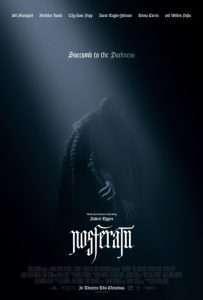 Vampires may differ in their various forms depending on the storyteller but there are core threads that many would recognise as connected to vampires. Pale beings with a thirst for blood who stalk the night can be portrayed in very different ways and it is their flexibility that has been key to vampire’s longevity. Nosferatu is the vampire’s introduction to cinema with Max Schreck portraying Count Olaf. Released in 1922, a silent reimagining of Stoker’s Dracula emphasized the existential dread of the vampire which focused on the horror aspect of the undead before vampires become much more romanticised. Robert Egger’s Nosferatu (2024) promises to bring the horror back to vampires with the talented director bringing his realistic, visceral filmmaking skills to the undead character that will frighten audiences around the globe. In 1922, Nosferatu was released in a world recovering from the shock of World War I and dealing with decay and instability and Egger’s version is being released in a world of uncertainty once more and it will be interesting to see how audiences connect to the film.
Vampires may differ in their various forms depending on the storyteller but there are core threads that many would recognise as connected to vampires. Pale beings with a thirst for blood who stalk the night can be portrayed in very different ways and it is their flexibility that has been key to vampire’s longevity. Nosferatu is the vampire’s introduction to cinema with Max Schreck portraying Count Olaf. Released in 1922, a silent reimagining of Stoker’s Dracula emphasized the existential dread of the vampire which focused on the horror aspect of the undead before vampires become much more romanticised. Robert Egger’s Nosferatu (2024) promises to bring the horror back to vampires with the talented director bringing his realistic, visceral filmmaking skills to the undead character that will frighten audiences around the globe. In 1922, Nosferatu was released in a world recovering from the shock of World War I and dealing with decay and instability and Egger’s version is being released in a world of uncertainty once more and it will be interesting to see how audiences connect to the film.
Since Nosferatu’s introduction, vampires have swarmed over the screen. A dark sensuality oozes throughout work such as Francis Ford Coppola’s Dracula (1992), An Interview with a Vampire, Underworld and From Dusk till Dawn with the popularity of vampires creating a cultural phenomenon in the Twilight series which brought sparkling, romantic vampires to the world. Marvel’s Blade brought us our first superhero vampire whilst Buffy the Vampire Slayer became a wildly popular TV series about a young female slayer struggling to balance a normal life with her duties as a vampire slayer. These vampires are shown as cool, eternal beings who have built up decades or sometimes centuries of knowledge and understanding of the world. Those watching wanted a part of that eternal life—to be seen as cool and know who they truly are. It is something played for laughs in the comedy, What We Do in the Shadows with a vampire’s familiar constantly attempting to convince his vampire master to turn him into a member of the eternal undead. There is an appeal in characters who live forever but it also allows us to ask some difficult questions about our own lives. If we were to live forever, what would be important to us? Is life full of meaning because it is finite? Reading about or watching characters with immortality allows for reflection of our own lives and when we see the choices that these characters make in the time they have—it poses interesting questions for us to answer as humans. These vampires are cool, strong, fast, and it is easy to have a bit of envy which draws us to these shows and characters. It also allows us to get behind those who fight against such foes as it creates a David and Goliath dynamic and we can get behind the underdog.
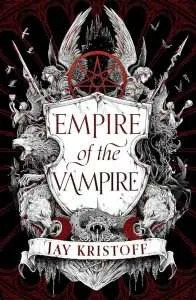 Another great example of the way vampire stories can transcend their horror roots and ask deep, philosophical questions can be seen in Jay Kristoff’s novel Empire of the Vampire. The novel is set in a world plunged into eternal darkness with Gabriel de Leon, a vampire hunter descended from those he hunts who is caught in a war between mortals and the undead. The vampires in the novel are complex and the narrative an epic, expansive story that once again shows the diverse nature of vampires. Gabriel’s journey allows him to confront moral ambiguity with him portraying a typical morally grey character, one who can be seen as good but who has done bad things. There is religious fanaticism, true heroism and bravery, and vile monstrosities. Similar themes can be seen in Netflix’s streaming success Castlevania, based on the popular game. It uses a deeply emotional lens to show a struggle between humanity and vampires and reimagines Dracula as a broken character and one who is a grieving, vengeful father which adds more nuance to a character many would feel they already know. He is no longer the mere monster but a tragic villain and one who can draw sympathy. The series dives into prejudice, religion, the abuse of power, and the ultimate cost of revenge. It is a relatable tale laced with magic and fantastical elements. It is yet another demonstration of how adaptable vampire lore can be for different audiences.
Another great example of the way vampire stories can transcend their horror roots and ask deep, philosophical questions can be seen in Jay Kristoff’s novel Empire of the Vampire. The novel is set in a world plunged into eternal darkness with Gabriel de Leon, a vampire hunter descended from those he hunts who is caught in a war between mortals and the undead. The vampires in the novel are complex and the narrative an epic, expansive story that once again shows the diverse nature of vampires. Gabriel’s journey allows him to confront moral ambiguity with him portraying a typical morally grey character, one who can be seen as good but who has done bad things. There is religious fanaticism, true heroism and bravery, and vile monstrosities. Similar themes can be seen in Netflix’s streaming success Castlevania, based on the popular game. It uses a deeply emotional lens to show a struggle between humanity and vampires and reimagines Dracula as a broken character and one who is a grieving, vengeful father which adds more nuance to a character many would feel they already know. He is no longer the mere monster but a tragic villain and one who can draw sympathy. The series dives into prejudice, religion, the abuse of power, and the ultimate cost of revenge. It is a relatable tale laced with magic and fantastical elements. It is yet another demonstration of how adaptable vampire lore can be for different audiences.
At their core, vampire stories have remained relevant throughout the years for a number of reasons. They tap into the fears and desires that we have and the stories are constantly reinvented to suit different audiences and evolve with cultural shifts. There has always been a dark allure to the undead beings but each story has its own twist and lens through which to show these vampires and those who stand with and against them. The stories allow us to really discuss what makes us human, what we are scared of and what we want from life. Whether it is the silent horror seen in Nosferatu, the weary introspection seen in Empire of the Vampire, or the tragic tale of Dracula in Castlevania, these tales endure because they allow us to think deeply about ourselves and our lives. Vampires tales can be adapted for all, if you are a fan of horror: Nosferatu, a fan of action: From Dusk till Dawn, Comedy: What We Do in the Shadows, Romance: Interview with the Vampire, World Cinema: Thirst (incredible Korean film), Let the Right One In (the American remake isn’t bad either…), there is something for everyone. The tales, much like the iconic vampires themselves, are seemingly immortal, and will endure forevermore.
The post The Eternal Appeal of Vampires appeared first on Grimdark Magazine.
January 19, 2025
REVIEW: The Rig S1
Last Updated on January 20, 2025
The Rig is a British science fiction horror show made for Amazon Prime. I didn’t watch the first season when it came out in 2023 but decided to watch both when season two came out. This will be a discussion of the first season only, though. Fans of grimdark will note The Rig is something that includes its collection of morally ambiguous protagonists, horrific monsters, and a nihilistic situation that would make HP Lovecraft proud.
 The premise is a Scottish oil rig is owned by a fictional conglomerate called Pictor. The oil rig has been running for decades and has a dedicated crew that depends on it to provide for their families. It is the holidays, though, and the crew is anxious to get home. There’s also tension in the air due to the rumors spreading around the rig that their jobs will soon be rendered obsolete by the green-friendly upgrades that their corporate liaison, Rose (Emily Hampshire), has been advocating. Rose is dating one of the riggers, Fulmer (Martin Compston), and frequently buts heads with the rig’s manager, Magnus (Ian Glen).
The premise is a Scottish oil rig is owned by a fictional conglomerate called Pictor. The oil rig has been running for decades and has a dedicated crew that depends on it to provide for their families. It is the holidays, though, and the crew is anxious to get home. There’s also tension in the air due to the rumors spreading around the rig that their jobs will soon be rendered obsolete by the green-friendly upgrades that their corporate liaison, Rose (Emily Hampshire), has been advocating. Rose is dating one of the riggers, Fulmer (Martin Compston), and frequently buts heads with the rig’s manager, Magnus (Ian Glen).
Before anyone can get home for the holidays, though, a mysterious fog settles over the area. This results in them being unable to communicate with the mainland as well as several other strange effects. Some of the crew start acting strange with wild claims and behaviors. This results in paranoia starting to affect the crew with one, Lars (Owen Teale), being especially vocal in his anger. As happens in a lot of horror movies and shows, it becomes a question of who is more dangerous, the monster or the reaction to the monster.
The Rig has a very large cast, consisting of a dozen or more named characters. This is good for a horror show because it allows the cast to be threatened in a lot of ways without knowing who is going to live and who is going to die. It also has the issue of making sure you must pay close attention as there’s five or six plots running simultaneously at any given time. Body count wise, the show is fairly tame. Much of the story is about building on the suspense of what might be going on instead of going full The Thing.
Part of what makes this season work is the isolated location and paranoia work. An oil rig is one of the last places on Earth where you can’t necessarily call for help and are sufficiently isolated for old style horror. The characters are believable enough, if a bit exaggerated, and you care about enough of them that when things go to Hell, you want them to pull ahead. I also appreciated the mystery of what the cause of events is. The show has an environmental theme and talks about global warming, but it is rarely overwhelming (and the working-class cast may be sympathetic but not at the expense of their livelihoods).
Is it a perfect work? No, I’d say that it could have gone much darker and more terrifying. There’s also amusing anecdotes like the fact Ian Glen’s Scottish accent comes off as unbelievable at times despite him being Scottish in real life. There are some good elements, though, and they outweigh the bad. Overall, it’s worth a watch and I enjoyed it as both sci-fi as well as horror.
The post REVIEW: The Rig S1 appeared first on Grimdark Magazine.
January 18, 2025
INTERVIEW: Ed McDonald
Last Updated on January 19, 2025
Ed McDonald is a UK-based fantasy author known for his contributions to the dark fantasy and grimdark genres. His books often explore morally ambiguous themes, delving into complex issues of morality, characters, and corruption. At the same time he weaves in exciting action sequences and pacing. He is particularly acclaimed for his Raven’s Mark series and The Redwinter Chronicles. The final instalment of this trilogy, titled Witch Queen of Redwinter, was released in November 2024. Ed was kind enough to take the time to discuss the significant book that shaped his identity as an author.
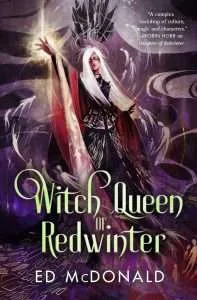 [GdM] What novel helped you become who you are? And how?
[GdM] What novel helped you become who you are? And how?
[EM] “Do not lie, cheat or steal. These things are for lesser men. Protect the weak against the evil strong and never allow thoughts of gain to lead you into the pursuit of evil.” – from the Iron Code of Druss.
Not every book must shine as an example across all areas of writing to speak to you in a particular way, and this one certainly doesn’t. I received it in a Christmas stocking aged 13 and is my annual summer re-read. Not a book that would win awards for its prose, it was written in 1984, so it might cause a fair bit of pearl clutching in its phrasing or representation at times, but this book carries such a powerful message, it is the book that more than any lecture could try to convey, any podcast host could argue, any PhD writing revisionist could conjure, is the book that taught me what it means to be a man. This book, of course, is Legend by David Gemmell. The message in this novel about the end of life and giving our fleeting existence meaning is that you don’t have to have good feelings. You don’t have to have always been a paladin. You can feel selfish, and you can be a man of violence. But it’s what you do with that power that matters, and you must judge yourself more harshly than anyone else. That’s the impact it had on me. This novel gave me my philosophy, but more than that, it told me what kind of man I should be. Those claiming that masculinity has been taken from us in the 21st century never understood what being a man meant in the first place. David Gemmell did, and as a teenager, he showed me here. It means using the privileges you’ve been given, the skills you acquired, to stand for those who don’t have them, even in the face odds that cannot be beaten. It’s knowing you’ll lose and doing the right thing anyway.
[GdM] Certainly high praise and much deserved for this. I hear this a lot about how Gemmell was the writer that showed those new to the genre the power that fiction had; not everything has to be fanciful and devoid of meaning in SFF. Much of the reading I have done in fiction has had a greater impact on who I am than any non-fiction book ever did. Where did you go from there? And do you use the lessons from Gemmell in how you write characters?

Author Ed McDonald
[EM] I think that fiction is always in a bind: it is not real, and therefore cannot show us anything true, but at the same time it can show us who we are, who we want to be, and the things that resonate truly ring out into our psyche. In writing characters, I rarely (if ever) am aware of the influence that’s causing me to write them at any given moment, and if I was, I’d probably shy from writing that way. I just sit and write, and the characters appear. I rarely have any conscious thought about writing at all—for me it’s more done by feeling than by design. And yet, I think that in everything I write you’ll find threads of Gemmell’s messages permeating through. The siege that cannot be won; the impossible last stands; the one-man-against-all-odds; and perhaps most of all, my protagonists are always possessed of a singular will not to give in, to fight on, to never say die, never surrender.
[GdM] Aside from Gemmell, are there any current works or authors you admire and why? What is it about their works and authors that make them stand for you?
[EM] I have ever been, and will ever be, in awe of Robin Hobb, whose ability to create character depth is absolutely second to none. But if we’re talking current and mind-blowing, Andy Weir’s Project: Hail Mary is very hard to match. I really like what Tamsyn Muir does with prose and dialect in Gideon the Ninth, it’s funny, fresh and irreverent. These days I read a lot of spy thrillers and most recently I enjoyed Agent Seventeen by John Brownlow.
Read Witch Queen of Redwinter by Ed McDonaldThe post INTERVIEW: Ed McDonald appeared first on Grimdark Magazine.
January 17, 2025
REVIEW: Wind and Truth by Brandon Sanderson
Last Updated on January 18, 2025
Wind and Truth is the fifth entry in the incredible The Stormlight Archive series by Brandon Sanderson. This novel is the midpoint of the saga and the conclusion of the first narrative arc. At this moment, the stakes could not be greater, tensions are sky-high, and the characters we have been following for around five thousand pages get to show what they are made of. In ten days, Dalinar Kholin will face Odium’s champion. The fate of Roshar, the lives of the inhabitants, the lines on the maps, and the destinies of The Stormlight Archive’s main characters will all be dramatically affected by the contest’s outcome. The gods of the Cosmere watch on with trepidation.
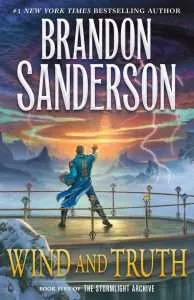 The three main characters in The Stormlight Archive are Kaladin, Shallan, and Dalinar. Here, Kaladin accompanies the former assassin Szeth. The latter wishes to complete his Skybreaker quest to cleanse his homeland. The voices in Szeth’s head are becoming crippling and Kaladin’s assistance, having in common Szeth’s struggles with darkness and his coping mechanisms, could be a deciding factor in the mission’s success. Lightweaver Shallan has unfinished business with Mraize and the Ghostbloods and much of her page-time throughout Wind and Truth is a complex game of cat and mouse. However, this description is wildly under-selling the importance, inventiveness, and intricacies of this plot. Dalinar, the Blackthorn, legendary warlord turned scholar seeks answers and an edge against the evil god Odium. To have any hope, he must traverse the Spiritual Relam, a place so unpredictable and damaging that even gods and immortals fear to tread there.
The three main characters in The Stormlight Archive are Kaladin, Shallan, and Dalinar. Here, Kaladin accompanies the former assassin Szeth. The latter wishes to complete his Skybreaker quest to cleanse his homeland. The voices in Szeth’s head are becoming crippling and Kaladin’s assistance, having in common Szeth’s struggles with darkness and his coping mechanisms, could be a deciding factor in the mission’s success. Lightweaver Shallan has unfinished business with Mraize and the Ghostbloods and much of her page-time throughout Wind and Truth is a complex game of cat and mouse. However, this description is wildly under-selling the importance, inventiveness, and intricacies of this plot. Dalinar, the Blackthorn, legendary warlord turned scholar seeks answers and an edge against the evil god Odium. To have any hope, he must traverse the Spiritual Relam, a place so unpredictable and damaging that even gods and immortals fear to tread there.
The Cognitive Realm of The Stormlight Archive has always had a magical yet strange feel. I was engrossed with the scenes depicted there, in both previous volumes and in this novel too. With Wind and Truth, I was intrigued to see what the previously mentioned Spiritual Realm segments would offer. It is a unique plane of existence with differing rules and potential. I can report that the events portrayed there were exciting and rewarding to follow. Furthermore, the revelations regarding how this realm operates are captivating.
The magic schemes and imaginative potential have remained a highlight throughout The Stormlight Archive. Moving on from players learning about their powers in earlier books (Words of Radiance and Oathbringer), now Radiants, Spren, Fused, Heralds, Regals, Worldhoppers and gods are all in the mix and they are formidable and often fascinating to follow. Sanderson offers a world where nothing stands still, and where practices and possibilities (magical, scientific, political) are always progressing and evolving. There are standout moments when a character advances, performing an astonishing and unforeseeable act. Credit to the author is deserved because these instances never seem disjointed or against the rules. The seeds for these revelations feel like they have been planted throughout the whole series. Upto and including Wind and Truth, it has remained a joy to see a main character flourishing, magically or mentally. Scenes such as these are beautifully composed and with the close affinity between character and reader, it is as if we share the sense of achievement. Similarly, when tragic developments happen, they hit hard too.
Truthfully, some of my favourite fantasy characters live within these pages. I will not divulge too much about certain character arcs or standout segments. However, I will note the following: Adolin is amazing. Like Adolin’s trial in Rhythm of War, what happens to him in Wind and Truth makes him a thrilling person to follow and I feel that every aspect of his story is perfect. Adolin fights on one of the battlefronts in Wind and Truth, as does another standout character, the Windrunner Sigzil. The humans and Odium’s army are actively warring until the contest on the tenth day, and Sigzil’s promotion to a point-of-view character, showcasing how he influences proceedings, is gripping. Unfortunately, not every storyline is a winner. One of the few surviving Parshendi, Venli’s storyline is plodding and ambles along. Likewise, it was disappointing that not much page time was spent with the Fused Leshwi, especially after she became one of the standout new additions in Rhythm of War.
Wind and Truth is as good an ending as I could have hoped for. There are heart warming moments, dialogue exchanges that are both poignant and powerful, stunningly worked scenes of humour, and strong bonds and brotherhoods fully on show. While reading, each day I tried to finish one of the days in Wind and Truth. This was enjoyable and I found it upped the ante as my reading coincided with the countdown. This added to the intensifying of events, complications, and unpredictability of how it could all end. Nothing prepared me for the last day. I almost did not want to finish reading the novel’s conclusions because I could not predict how it could end, and maybe I did not want it to. In a good way, I felt breathless and uneasy as the endings hit me on many emotional levels.
In my reviews for each book in The Stormlight Archive series, I have been extremely positive about how important this series is to modern fantasy. After completing Wind and Truth, my opinions have not changed and I feel Sanderson has storming nailed this fifth book. The Stormlight Archive is one of my most re-read fantasy series as I revisit it with every new release. Come book six, I will do the same again because there is still so much left to happen in this corner of the Cosmere and beyond. The next book cannot come soon enough. If you are considering reading this series, this could be the best time to start.
Thanks to Tor (US) for a review copy in exchange for an honest review.
Wind and Truth by Brandon Sanderson
The post REVIEW: Wind and Truth by Brandon Sanderson appeared first on Grimdark Magazine.
January 16, 2025
Review: Creature Commandos
Creature Commandos by James Gunn is the first new property of the new DC Cinematic Universe after the dissolution of the previous one for a variety of reasons. What does this have to do with grimdark? Well, James Gunn is a man who can do both silly as well as incredibly dark if you’re familiar with his previous work. The Suicide Squad was a story of antiheroes, black comedy, moral ambiguity, and an utterly corrupt US government among its gleefully madcap use of DC continuity. DC used to be famous for its moral paragons and colorful worlds, but it has been the darker of the two comic companies for decades now. So, yes, I’m going to say Creature Commandos is something worth watching for grimdark fans. It is the “fun” sort of grimdark where tragedy is hilarious.
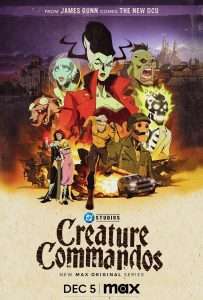 The premise for this HBO Max exclusive cartoon is simple: after the events of Peacemaker, Amanda Waller has been banned as using superpowered criminals as cannon fodder for government black ops and wet work. Undeterred by ethics or the spirit of the law, she decides that instead of using criminals, she will use “nonhumans” that do not technically have rights according to US law. These include the Bride (Indira Varma), Doctor Phosphorus (Alan Tudyk), the Weasel (John Gunn), GI Robot (John Gunn again), and fish-woman Nina Mazursky (Zoe Chao). They will be led by Rick Flagg Senior (Frank Grillo), who is basically there to substitute for his dead son.
The premise for this HBO Max exclusive cartoon is simple: after the events of Peacemaker, Amanda Waller has been banned as using superpowered criminals as cannon fodder for government black ops and wet work. Undeterred by ethics or the spirit of the law, she decides that instead of using criminals, she will use “nonhumans” that do not technically have rights according to US law. These include the Bride (Indira Varma), Doctor Phosphorus (Alan Tudyk), the Weasel (John Gunn), GI Robot (John Gunn again), and fish-woman Nina Mazursky (Zoe Chao). They will be led by Rick Flagg Senior (Frank Grillo), who is basically there to substitute for his dead son.
This is basically the latest instalment of the Suicide Squad collection along with the original, The Suicide Squad, and Peacemaker, Suicide Squad: Assault on Arkham, Suicide Squad Isekai, and Suicide Squad: Kill the Justice League. Frankly, it is a huge push for a niche corner of the DC universe. The world seems front loaded with morally ambiguous antiheroes forced to work for the government versus, well, Superman and even Batman projects by comparison. Let alone other heroes like Green Lantern, Flash, or Wonder Woman. Still, I have to say that this is probably the best of the Suicide Squad adaptations despite being a cast from an entirely different comic.
Creature Commandos functions a bit like Lost of all things. Each episode gets into the backstory of one of the commandos and how they got to be in the position they did. All of them are compelling with most of the “monsters” having reasons for what they did before society drove them to the brink. The most compelling of them was Doctor Phosphorous’ story despite the fact he has the most “traditional” villain origin of them all. I also felt GI Robot and Weasel’s stories were ones that reflected how society is generally scummy and incapable of accommodating anyone different. I don’t exaggerate when I say that the tales are easily the darkest and most messed up thing I’ve seen outside of The Penguin in years.
The actual story is needlessly complicated with the Creature Commandos being sent to an Eastern block monarchy called Pokolistan to stop Wonder Woman villain Circe from overthrowing its government with an army of online incels. No, seriously. To be honest, the “metaplot” that binds all the personal stories together doesn’t hang together in the slightest and ends as abruptly as it began. Still, I loved Princess Ilana (Maria Bakalova) and wish we’d gotten more of her. We also get glimpses of Batman and other elements of how the “new” DCU functions, which seme a lot denser and wackier than is typical for cinematic superhero universes.
James Gunn clearly had complete freedom for Creature Commandos and his fingerprints are all over the work from beginning to end. Everything from its over-the-top action, wacky humor, personal tragedies, extensive jukebox soundtrack, and oddball misfits trying to save the day. This is not for kids and there’s a couple of sex scenes (mostly off screen but clear as to what’s happened). The violence is also incredibly graphic as can be done when you’re animating something. Creature Commandos feels a bit like Heavy Metal from the Eighties crossed with Guardians of the Galaxy. I recommend it for people who love more obscure portions of the DCU and what the Suicide Squad should be like.
The post Review: Creature Commandos appeared first on Grimdark Magazine.
January 15, 2025
REVIEW: Symbiote by Michael Nayak
Debut novel Symbiote, from Michael Nayak, blends The Thing with 28 Days Later and a dash of Alien. It begins as the sun sets over Antarctica and the over-winter crew at the Amundsen-Scott South Pole station settle in for a long six months of night. However, upon intercepting two Chinese vehicles on a 700 mile traverse across the continent to the South Pole, our crew discover a grisly scene with far-reaching ramifications; the first murder in Antarctica. In this near-future, America and China are at a stalemate in the third World War. Besides obvious political tensions, what could force the Chinese scientists to attempt such a perilous journey across one of the deadliest terrains on the planet?
“The dream slides off in shiny fragments, littering the floor of his mind like a broken wine glass not yet swept up.”
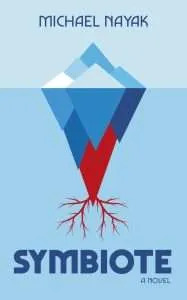 Right from the start, Symbiote is laden with imagery that grabs your attention and immerses you in the heavy mood that blankets the South Pole station. Their season has quickly turned into something altogether unexpected – with a brutalised body frozen in the back of one of the Chinese trucks, and three Chinese scientists to keep isolated – stress begins to push on the cracks in the station. Our pivotal character, Rajan, is the only member of military personnel on the continent and is thrust into a precarious position of authority with the arrival of the murdered man.
Right from the start, Symbiote is laden with imagery that grabs your attention and immerses you in the heavy mood that blankets the South Pole station. Their season has quickly turned into something altogether unexpected – with a brutalised body frozen in the back of one of the Chinese trucks, and three Chinese scientists to keep isolated – stress begins to push on the cracks in the station. Our pivotal character, Rajan, is the only member of military personnel on the continent and is thrust into a precarious position of authority with the arrival of the murdered man.
Unbeknownst to the ‘polie’ crew, the dead man was infected with an extremophile microbe. Unseen and only active when temperatures drop significantly, it has already spread to Rajan and his crew before it is discovered. Through multiple POVs, we see the influence these microbes exert on the isolated humans. At first, feeling so hot they’re stripping off thermal layers in the middle of a -100F winter storm and galloping half naked through the snow. It makes them stronger, faster and more resilient. It also makes them angrier. This is where the book is reminiscent of 28 Days Later, invoking memories of the Rage virus that decimated a fictional Great Britain.
Nayak ratchets up the action quickly in Symbiote as one death follows another; one infected crew member becomes three, and the remaining crew struggle to grapple with what is happening as their world deteriorates around them. After the station doctor, Wei, identifies the microbes and theorises their susceptibility to variations in heat, the crew think they’ve got a handle on the infection. That is until the despair-fuelled recklessness of one crew member triggers a mutation in the microbes, transforming them into symbiotic organisms.
“Dread comes to roost in his heart, a malicious bird returning to an old nest.”
Rajan and his closest allies begin a fight for survival against not only the microbes but their former colleagues and the environment itself. Throughout Symbiote, the imaginative and beautifully descriptive language Nayak employs ensures you feel the tension and the desperation as the death toll rises and the temperature drops. The prose layers on a thick moodiness that pervades throughout the book. The main story is interspersed with extracts from supplementary sources that hint at a much wider catastrophe and at the end of the Author’s Note, Nayak mentions his intention to continue telling Rajan et al’s story, which is a welcome treat for those craving more. Angry Robot confirms a second novel can be expected early 2026. This is a fast-paced horror set at the extremes of the human condition, that will grab you by the throat and drag you along for the ride.
Read Symbiote by Michael NayakThe post REVIEW: Symbiote by Michael Nayak appeared first on Grimdark Magazine.
January 14, 2025
REVIEW: Tomorrow, The Killing by Daniel Polansky
Last Updated on January 15, 2025
In Tomorrow, the Killing by Daniel Polansky (Low Town 2) an old general from the Warden’s days in The Great War asks the Warden to find his daughter in Low Town and return her to him. Naturally, things do not go as planned and the Warden’s conniving and manipulating of everyone around him kicks off a massive fight for power between rival gangs, veterans, the terrifying Black House, the local police, and quickly spreads to those he loves. After absolutely loving The Straight Razor Cure it took me way too long to get back into this trilogy, but I am so glad to have read this absolute grimdark masterpiece.
 I love reading Polansky’s Warden, As he plies his trade in the shadows, applying pressure here, violence there, and pulling the strings of the city around him. His relationships with those he loves are hard to read at times, as the self-destructive nature that makes him so vicious in the streets, also makes him an incredibly hard person to love–and in the end, I always think there is a firm sliver of him that wants to be seen by those he thinks of as family. To be seen for what he sacrifices for them, and that, while he does so in his own rather horrible fashion, he does value them. A key example of this in Tomorrow, The Killing is the boy in his charge, Wren. Wren has the Art, but can’t control it yet, and is at risk of burning his brain out if he continues to self-teach and experiment. He needs schooling, but the Warden doesn’t want him in a Crown military school so that he doesn’t end up on the front lines somewhere, so he must look elsewhere, beyond the depths of Low Town and into somewhere more lawless. He always makes time to try to direct Wren on the right path to help him survive, but in doing so continuously damages the boy with a tough and oftentimes abusive affection, the results of which I’m assuming I’ll get to discover in book three, She Who Waits.
I love reading Polansky’s Warden, As he plies his trade in the shadows, applying pressure here, violence there, and pulling the strings of the city around him. His relationships with those he loves are hard to read at times, as the self-destructive nature that makes him so vicious in the streets, also makes him an incredibly hard person to love–and in the end, I always think there is a firm sliver of him that wants to be seen by those he thinks of as family. To be seen for what he sacrifices for them, and that, while he does so in his own rather horrible fashion, he does value them. A key example of this in Tomorrow, The Killing is the boy in his charge, Wren. Wren has the Art, but can’t control it yet, and is at risk of burning his brain out if he continues to self-teach and experiment. He needs schooling, but the Warden doesn’t want him in a Crown military school so that he doesn’t end up on the front lines somewhere, so he must look elsewhere, beyond the depths of Low Town and into somewhere more lawless. He always makes time to try to direct Wren on the right path to help him survive, but in doing so continuously damages the boy with a tough and oftentimes abusive affection, the results of which I’m assuming I’ll get to discover in book three, She Who Waits.
The relationship between the Warden and his best mate and fellow survivor of the Great War, Adolphus, is key to this story. Adolphus, the hulking hero of the front who held the line against the Dren single handed, is, in the eyes of the Warden, looking to relive his glory days as part of the Veterans’ Association protest marches. Adolphus more just seems like a soul who needs a home among those who know what he went through—but he’s also a soul who looks at what his best mate has become and doesn’t like it, while having to stomach it to fund the tavern he and his wife run. Throw into the mix a pretty epic secret twist between the two that we discover deep into the story, and there is so much to enjoy unpicking between the two.
Told in two timelines, we get the grit and desperation of the city and the people in it, accompanied with the sheer horror of the war fifteen years prior. “The war” being WW1 if rifles were replaced with pikes and short swords while artillery shells and brutal magic salvoes rearranged the landscape around the trenches and turned men into puffs of red. This helps us with the “why” of the characters in the current timeline, providing key insights into the Warden, who otherwise might get lost a bit as a character amongst the snark and cynicism.
Overarchingly, Tomorrow, The Killing isn’t just a gang story, it’s another brilliant study into what war does to the survivors and what happens when you throw a quarter million of those survivors back into society. Some band together in shared horror and an inability to properly integrate back into society. Others don’t make it very long. Some try to get on with life and find something to bring meaning back into their lives, while others find purpose in crime. Very few, become creatures like the Warden.
Daniel Polansky is one of my favourite living authors. Between the Low Town series, novellas The Builders and The Seventh Perfection, novels such as Tomorrow’s Children, Those Above and Those Below, and his short works (such as Sticks and Stones in GdM#32 and King for a Day in The King Must Fall) I just can’t get enough. His voice is merciless, cynical, funny, unrelenting, and full of dark heart. His writing is crisp and impeccable. His stories cannot be put down.
Swimming in grit, snark, violence, and featuring one of the best character relationships I’ve had the pleasure of reading amongst all of it, Tomorrow The Killing by Daniel Polansky is utterly fucking un-put-downable. I’m immediately off to read the final book in the Low Town trilogy, She Who Waits.
Read Tomorrow, the Killing by Daniel PolanskyThe post REVIEW: Tomorrow, The Killing by Daniel Polansky appeared first on Grimdark Magazine.



